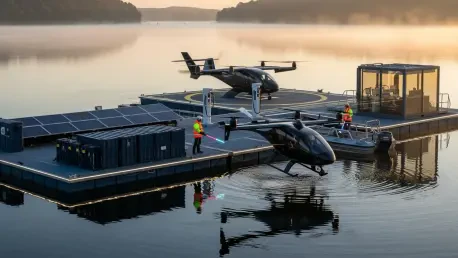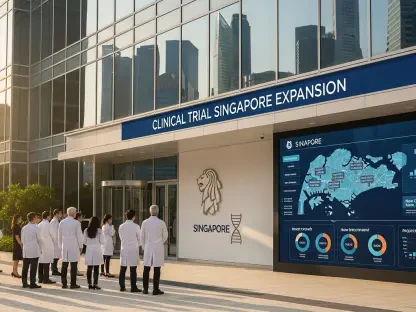Executive Take: Signals, Trends, And Near-Term Trajectories
AutoFlight’s floating, zero-carbon water vertiport signals a shift from land-bound hubs to modular maritime nodes that shorten permitting cycles, expand siting options, and align supply with real demand. By unifying landing pads, photovoltaic generation and storage, intelligent dispatch, and secure communications, the model consolidates costs and reduces operational uncertainty.
Three insights define the market narrative. First, integration is the differentiator: energy, aircraft, and digital control move as one system, raising sortie rates and reliability. Second, use-case diversity accelerates adoption, with cargo, public safety, commuting, and tourism each validating distinct economics. Third, the CATL-aligned energy stack—and a public demo at Dianshan Lake—shifts the conversation from promise to proof, positioning water-based infrastructure as practical capacity rather than a niche experiment.
Investors and operators read this as a staged scale-up path. Deploy light, validate routes, collect operational data, and expand incrementally—without locking capital into fixed real estate before demand justifies it.
Why A Waterborne Platform Matters Now
The market needs infrastructure that grows at the pace of aircraft readiness and public acceptance. Waterways offer clear approach paths, fewer noise-sensitive neighbors, and the flexibility to reposition assets as patterns change, creating an attractive alternative to protracted land development and zoning battles.
The strategic value extends beyond siting. Photovoltaic generation paired with on-platform storage stabilizes charging availability during peak windows while enabling carbon-neutral operations. This contrasts with grid-only strategies that face interconnect delays and tariff volatility, especially in ports with constrained capacity.
Moreover, the integrated model links revenue to resilience. During disruptions—storms, traffic closures, or grid instability—water-based staging can keep essential services moving. That reliability has pricing power, especially for emergency logistics and time-critical maintenance runs.
Market Dynamics, Economics, And Adoption Pathways
Energy-As-Infrastructure: From Constraint To Competitive Edge
Energy has been the bottleneck for eVTOL economics; turning it into a controllable asset changes margins and cadence. AutoFlight’s platform combines photovoltaic input with storage and dispatch logic, orchestrating fast turns across multiple aircraft while smoothing demand spikes. The CATL collaboration emphasizes pack safety, cycle life, and faster charge profiles, which cuts dwell time and raises daily utilization—arguably the most sensitive lever in route profitability.
The Dianshan Lake demonstration provided operational credibility: a two-ton-class takeoff, multi-ship formation, and live airdrop trials suggested that concurrent missions can be sustained without leaning entirely on shore power. For operators modeling cost per available ton-mile or seat-mile, this reduces the variability penalty and strengthens forecasts for premium time windows.
Multi-Mission Stacking And Revenue Mix
AutoFlight’s aircraft family—White Shark for industrial tasks, CarryAll for two-ton-class cargo, and Prosperity for six-seat passenger service—enables a portfolio approach. Cargo and public safety typically lead because payload tolerance and mission urgency support early pricing, while premium sea–air tourism builds brand and community familiarity. High-frequency island links and maintenance runs to marine energy assets add repeatable demand with measurable service-level targets.
Route densification follows mobile logistics logic: place a floating node to test a corridor, tune schedules, and, if utilization justifies it, add capacity or upgrade to a semi-permanent facility. Retrofitting ferry terminals or piers can compress capex further and turn existing footfall into new revenue. Weather windows, maritime traffic rules, and jurisdictional variance remain execution risks, but flexible staging allows dynamic redeployment rather than stranded assets.
Regional Readiness And Regulatory Convergence
Coastal Asia, parts of Europe, and island clusters show faster time-to-integrate thanks to mature port management and established maritime protocols. In the United States, harbor authorities, environmental reviews, and wildlife protections shape siting and operating envelopes, yet standardized approach corridors and maritime–aviation communications are poised to reduce friction.
A frequently missed point is resilience economics. When roads fail or demand spikes, water-based vertiports can host airdrop logistics, medical transport, and search operations without the overhead of land terminals. Misconceptions that water sites are peripheral fade as they backstop urban networks and provide testbeds for energy–ops models that later migrate to land hubs.
Emerging Curves: Technology, Economics, And Policy
Tighter coupling of generation, storage, and charging logic is set to raise sortie consistency and cut the variance that hobbles revenue planning. Incremental gains in energy density, better thermal management, and modular power units that scale seasonally will widen workable weather windows and support higher-frequency schedules.
Digitally, dispatch is moving toward full-stack operations: fleet health, weather-aware routing, maritime coordination, automated docking and mooring, and dynamic pricing. As datasets grow, predictive maintenance and energy forecasting should compress downtime, translating directly into higher asset yield.
Regulatory approaches are also converging. Expect clearer templates for passenger handling on water, standardized emergency procedures, and harmonized communication protocols bridging vessel traffic and air operations. Those frameworks should lower nonrecurring engineering and speed replication across ports with similar characteristics.
Strategic Conclusions And Operator Playbook
Results pointed to a pragmatic, capital-light route to scale that reduced land-use friction, diversified missions, and validated multi-aircraft operations with clean energy at the core. Operators started with cargo and public safety to prove reliability under constraint, then layered premium tourism and commuter services as confidence grew. Port authorities codified joint maritime–aviation playbooks, while energy partners prioritized safe, serviceable batteries and predictive charging tied to mission plans. The strongest outcomes came from treating energy, aircraft, and software as one product and from using floating nodes to de-risk route development before committing to permanent hubs.









